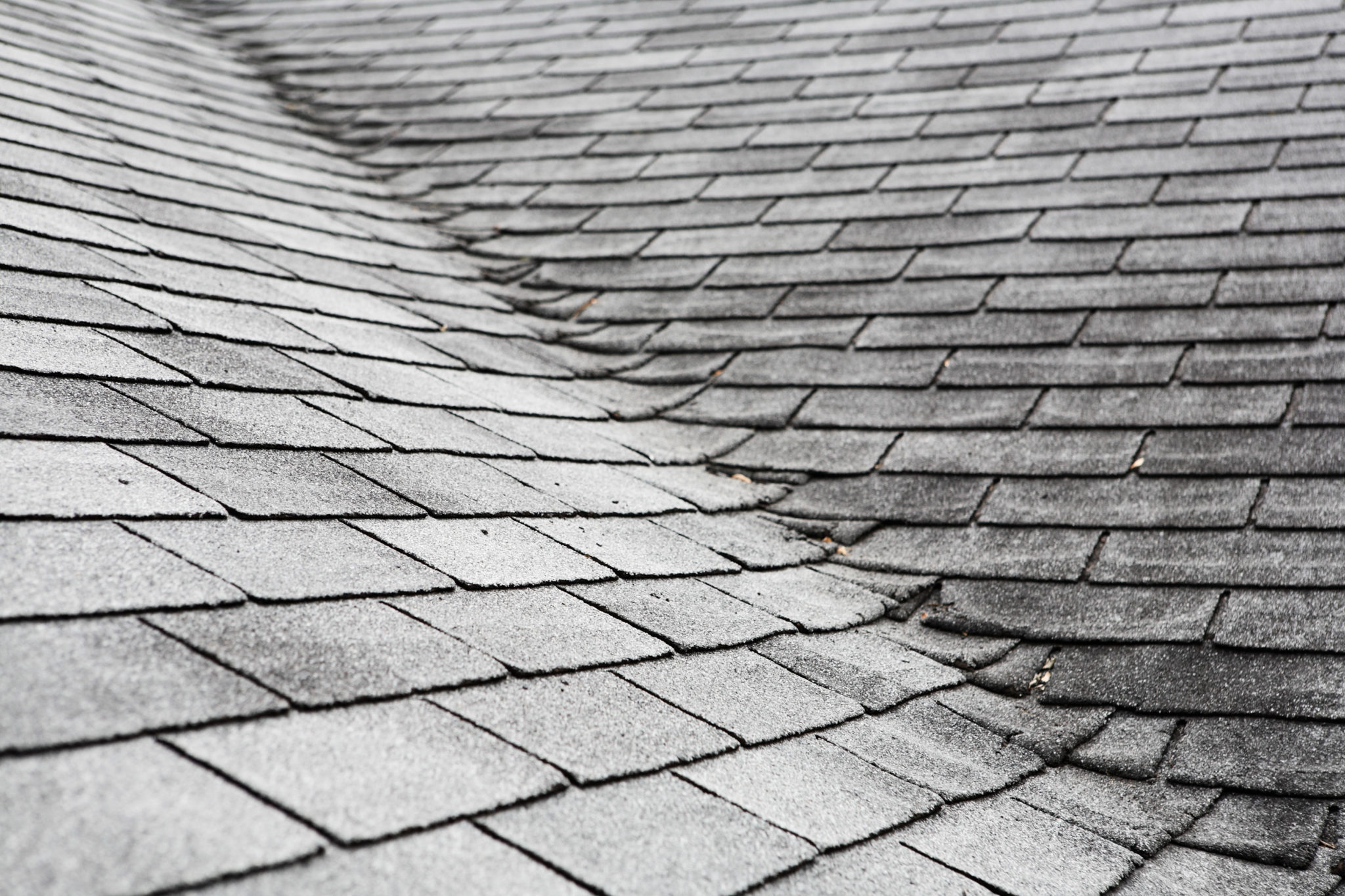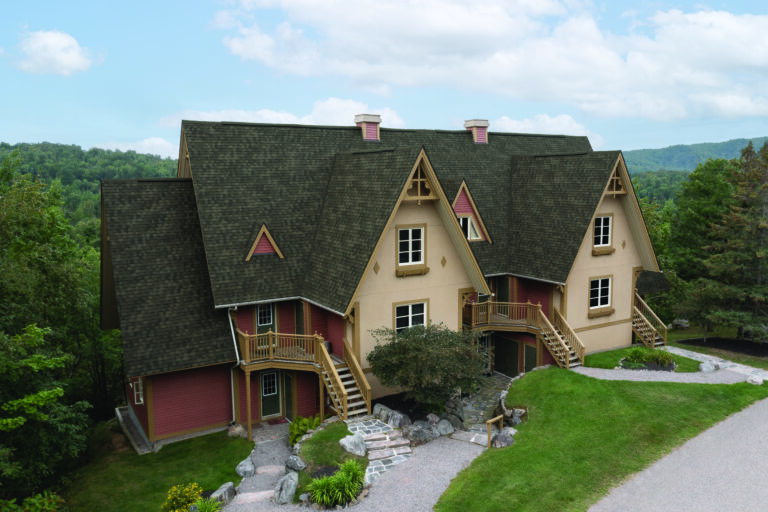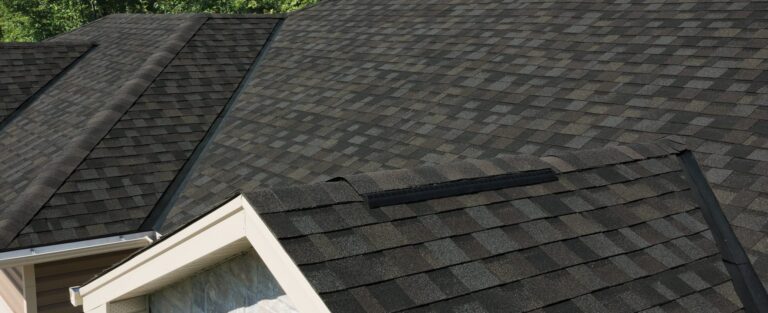Spotting the Signs of an Improper Roof Installation
Looking up at your roof, does it seem like something isn’t quite right? As a homeowner, you may not have the roofing know-how to spot whether your roofer made a mistake when they put your new roof on. But roofing installation errors happen, and they can impact the quality and longevity of your roof. When roofers perform installations, they need to follow building codes, manufacturer instructions and industry best practices. When they don’t, you might be able to spot those problems simply by looking at the roof. And, where there is one problem with the installation, there could be more, and that could mean repairs or even replacement costs for you down the road.
Protect your investment in your roof and learn about potential roof installation problems. Below, we’ll outline the signs that your roof may have these problems and what you can do if you know that your roof was not installed properly.
TABLE OF CONTENTS:
- Missing Components
- Shingle Installation Problems
- Flashing Installation Issues
- Valley Installation Issues
- Gutter Installation Issues
- Other Roof Installation Problems
- What to Do with a Bad Roof Installation?
- Avoid Problems if Your Roof is Installed Wrong
Missing Components
A roof is made of much more than just asphalt shingles. Several other components of a roof are necessary to have a proper, water-shedding roofing system. If any parts of the roof were not installed or have fallen off over time, those are signs your roofers were not paying due attention to their work on your roof.
Shingles
Are there obvious gaps where shingles should be on your roof? It is rare that shingles are missing because your roofers did not install them in the first place. Instead, it is much more likely that your roofers did attempt to put the shingles on, but they blew off in high winds due to improper nailing or because they did not seal properly.
You will likely not be able to see a shingle that hasn’t sealed properly. However, you may see the signs of improperly nailed shingles. You may notice that they don’t lie flat on the roof but stick up a bit. This is because the nails were not driven properly into the decking. The opposite problem: nails that were driven too deeply also occur but will not be visible from the ground. Either problem may result in leaks or other problems.
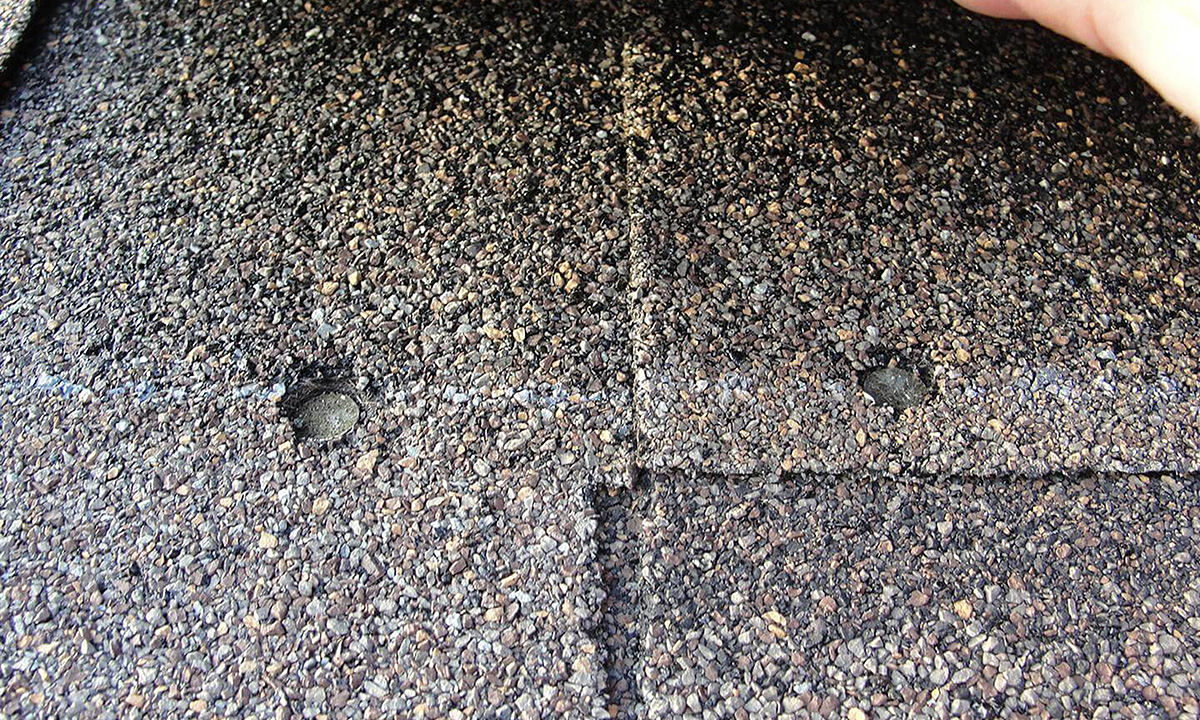
There are other nail-related requirements that roofers must follow. Roofing nails need to be the right material and size. Roofers must also follow the manufacturer’s instructions about where to place the nails in the shingles. If you are suspicious that your roofer didn’t use the right nails, or didn’t put them in the right spot, you can confirm those suspicions with another roofer or a roof inspection company.
When you have missing shingles, it is best to have a roofer inspect the roof and tell you if there are other shingles with improper nailing or failed seals. They may recommend you get a new roof or find that you only need to replace the affected shingles or have them manually sealed.
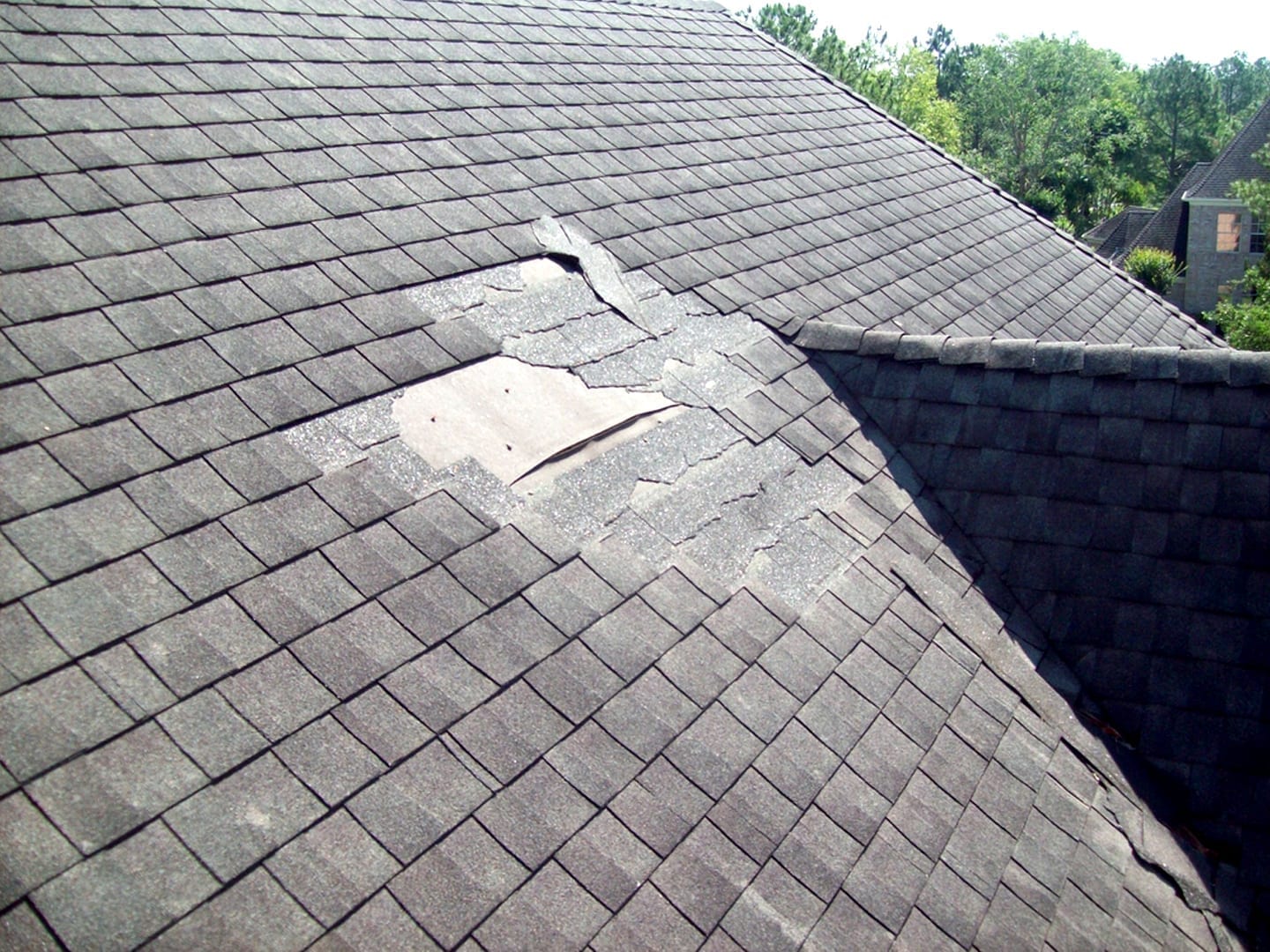
Underlayment
Underlayment refers to the layer of fabric-like material just under the shingles. It used to be a layer of felt, but now synthetic materials are available. You may not be able to see if underlayment is missing if the shingles have already been installed. Or, your roof may appear uneven, with unusual dips and high spots. This may be caused by improper underlayment installation. If your roofers did not fully unroll the underlayment and allow it to lay flat, it may bunch up in areas. This bunching may be visible through the shingles as raised spots or ridges.
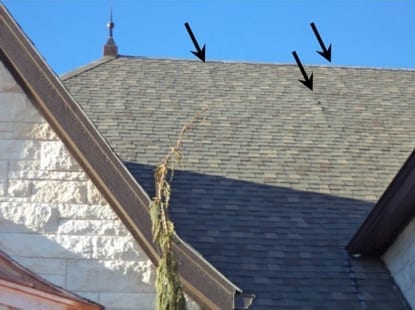
If you’re not sure what is causing the unusual appearance of your roof, a roofer can peek beneath the shingles and discover if underlayment was properly installed.
Underlayment serves a few key functions, including protecting the shingles from resin, providing a water barrier and a bit of fire resistance. It is important to have a roofer install it if it is missing from your roof.
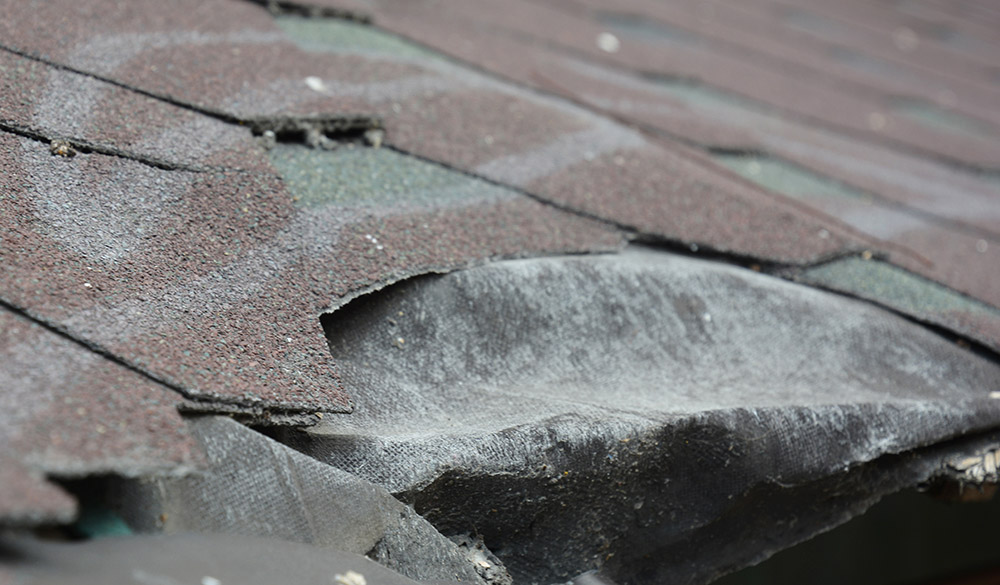
Ice and Water Protector
Ice and water protector is a second thin material that needs to be installed along the edges of the roof and down any valleys in the roof. Your building code and manufacturer instructions will dictate how much coverage you need from ice and water protector. Typically, you will not be able to see that ice and water protector is missing from the ground. However, a roofer can inspect the roof to find out.
Ice and water protector is vital to protect your roof and is required by most building codes. If you don’t have it installed, you may need a new roof.
Drip Edge
To cut corners, some underhanded or inexperienced roofers may neglect to add the drip edge to a roof. The drip edge is a thin piece of metal flashing placed on the edge of the roof. It directs water flow from the edge of the shingles and into the gutters. Without drip flashing, you may start to notice water damage on the decking and potentially on the side of your home.
A roofer can add drip edge flashing to a roof that is missing it, but they will have to assess the surrounding materials for damage and see if any need to be replaced as well.
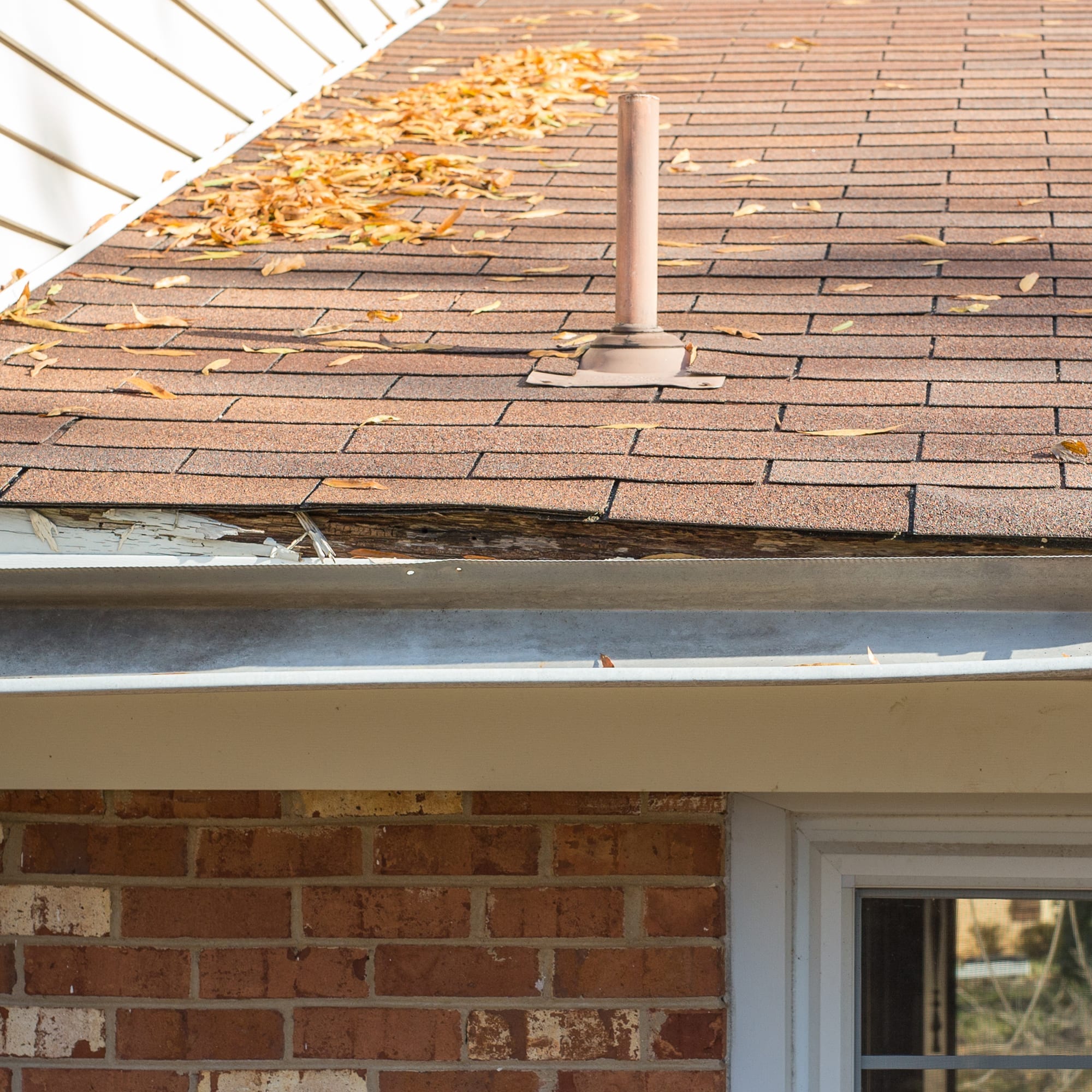
Other Flashing
As well as the edge of the roof, many other spots need to have flashing. Flashing is a thin material that protects vulnerable spots in the roof from water intrusion. This includes chimneys, valleys, dormers, plumbing boots and other objects that project from the roof. When this flashing is altogether missing, the most common sign is a leak. Before that happens, you can look along the roof projections to see if there is flashing or ask a roofer to do it for you.
Shingle Installation Problems
As they are the top-most layer of the roof, it is often easiest to visually spot shingle installation issues. Even those who are not well-versed in roofing can sometimes look at the pattern of shingles on a roof, compare it to its neighbors, and realize that something isn’t quite right. Below, we’ll give you some more tips on what exactly you’re looking for to spot improperly installed asphalt shingles.
Improper Offset
Shingles need to be offset from one another, kind of like the bricks in a brick wall. If all the shingle joints align up the roof, they can create gaps in the shingle layer for water to drain into. One of the most common mistakes with shingle offset is aligning the starter shingles and the first course. At first, this doesn’t seem to cause an issue, but over time leaks may develop. A roofer may also fail to follow the manufacturer’s guidelines on how to offset the other courses of shingles on the roof. These mistakes may also undermine the aesthetic patterns of properly laid shingles. Further, any improperly offset shingles may create leaks and will need to be replaced.
Alignment
When you look at the roof, the shingles should align with the edge of the roof. They should not run vertically or at an angle with this bottom edge. Improperly aligned shingles may be the result of a roofer starting their installation job somewhere other than at the edge of the roof. Or, they may have failed to add chalk lines to the roof. Chalk lines are temporary guides that help roofers keep the shingle line straight as they perform the installation. In any case, poorly aligned shingles can create odd visual patterns. Sometimes roof design forces roofers to make slight adjustments in shingle course alignment to accommodate where the decking is not square. Otherwise, misaligned shingles may need to be replaced by a roofer.
Exposure
The exposure of a shingle is the amount of the shingle that is exposed and not covered by the shingle above it. Manufacturers indicate specific exposure for their shingles in order to ensure proper look and performance.
Shingle exposure is not just an aesthetic issue. If the shingles are too far apart, parts of the shingle that were not designed for it may be exposed to the weather. You can see for yourself if your shingle exposure is correct by measuring the gap from the edge of one shingle to the start of the next. Then compare that distance to the distance called for in your shingle’s installation instructions. If it is too wide or too narrow, you can have them replaced.
Nailing
We covered improper nailing technique and the signs of it in the missing shingles section above.
Instructions
Every shingle is a little different, and manufacturers may provide further installation requirements that roofers need to follow to ensure the resulting roof will perform well. It is wise to work with a roofer who is familiar with these additional requirements and can tell you if your installation job accounted for them.
Flashing Installation Issues
There are many common roof flashing errors that you should be on the lookout for. Thankfully, in the case of flashing, you can often see these issues without much investigation.
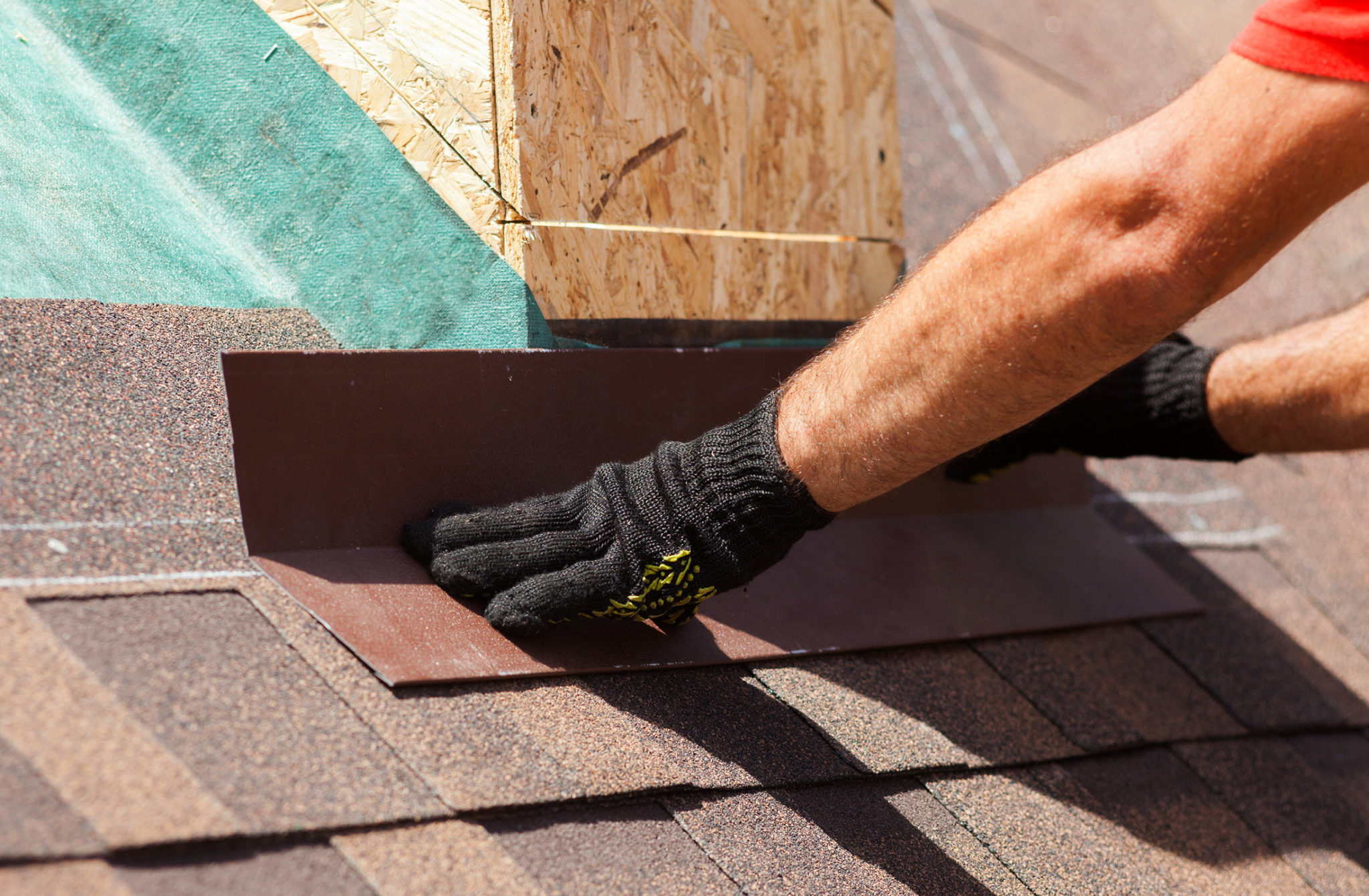
Chimney Flashing
Chimneys need to have base flashing and counter flashing. However, on improperly installed roofing, the counter flashing is often missing. Or, if it is present, it is not embedded in the mortar. Proper installation of counterflashing in the mortar is essential to repel water. If your chimney does not have this, you should work with a mason or a roofer to fix it.
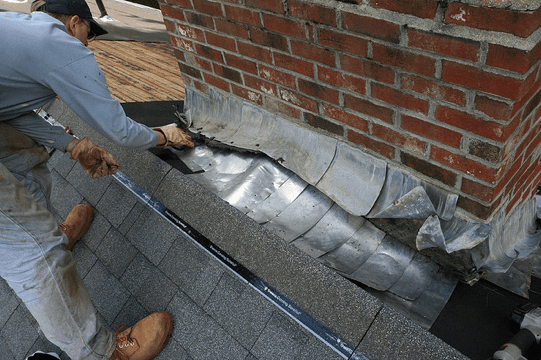
Step Flashing
Step flashing is a series of small pieces of flashing integrated with every course of shingles where those shingles meet a vertical wall. For example, you should find step flashing along any dormers that you have.
Unfortunately, there are many myths about step flashing that those who install it may believe. It is simple to think that adding more nails to step flashing relying on a simple caulking application of roofing cement alone will help them better repel water. However, both can be mistakes that may make the flashing more vulnerable to water intrusion.
Step flashing only needs roofing cement in a specific area, where two pieces of the flashing overlap. The cement should not be visible on the completed roof. Further, your roofer should have nailed each piece only once, in the top corner, against the decking. You can’t see this nail either, but if you see additional nails against the dormer, or additional roofing cement, it may indicate that these are likely installation errors.
Reused Flashing
There are no building codes that demand a roofer use brand new flashing when reroofing a home. However, it is best practice to do so, except in rare circumstances where the roof is being replaced early in its life. In this case, carefully removed flashing may be reused. In cases where the roof being replaced is old, roofers may not be placing the nails in the exact same place in the flashing or the decking as before, which means both may have unfilled holes after the installation is finished. Such holes can create the opportunity for water intrusion. It is best to ask your roofer to use new flashing. And if there is a piece of old flashing that is causing an issue, a roofer should replace it.
Valley Installation Issues
Valleys are one of the areas of the roof that is more susceptible to leaks. They naturally collect and drain water from the rest of the roof, which means they have more water flowing down them than the other roof surfaces. Also, due to their shape as a connection point between two roof faces, valleys require special installation techniques.
Open Metal Valleys
There are several styles of roof valley installation, but open metal valleys are the best option for roof performance. If you have an open metal valley, you will see a strip of metallic material down your roof’s valleys.
Depending on your area, other valley types may still be acceptable by building codes. However, it is worthwhile to have a roofer confirm that your roofers installed the valley correctly for the style it is and that it is performing well.
IKO’s limited warranty does not cover shingles applied in a closed valley where shingles are used to construct the valley or run-off areas of the roof.
Signs that you have an improperly installed valley include leaks and either no flashing or a soft non-metallic material used as flashing in the valley.
Gutter Installation Issues
Do you have overflowing gutters? Assuming your gutters have been maintained and are clean and clear of debris, the problem may have been their installation. While gutters may appear to be level when you’re looking at the roof, they need to be gently sloped towards each downspout. When the slope is correct, the problem may instead be that you have the wrong kind of gutters or not enough downspout for your roof’s size.
Another potential issue is the gutter’s distance from the roof. There needs to be a small gap between the fascia and the gutters and your roofers should have mounted the gutters 2-3 inches below the shingle overhang, so they are positioned to catch water as it falls. Otherwise the water may cause damage to the fascia board or miss the gutters and end up pooling on the landscape below, which can lead to foundation issues.
A professional roofer can help you determine if your gutters need to be adjusted for slope or distance.
Other Roof Installation Problems
There are a few other assorted roofing problems you should be on the lookout for.
Inappropriate Material Choice
Asphalt shingles should not be installed on a low slope roof lower than 2:12. Below that, your roofer should have used flat roofing material options. Also note that on roof slopes between less than 4:12 to 2:12, special application instructions may be required by the manufacturer.
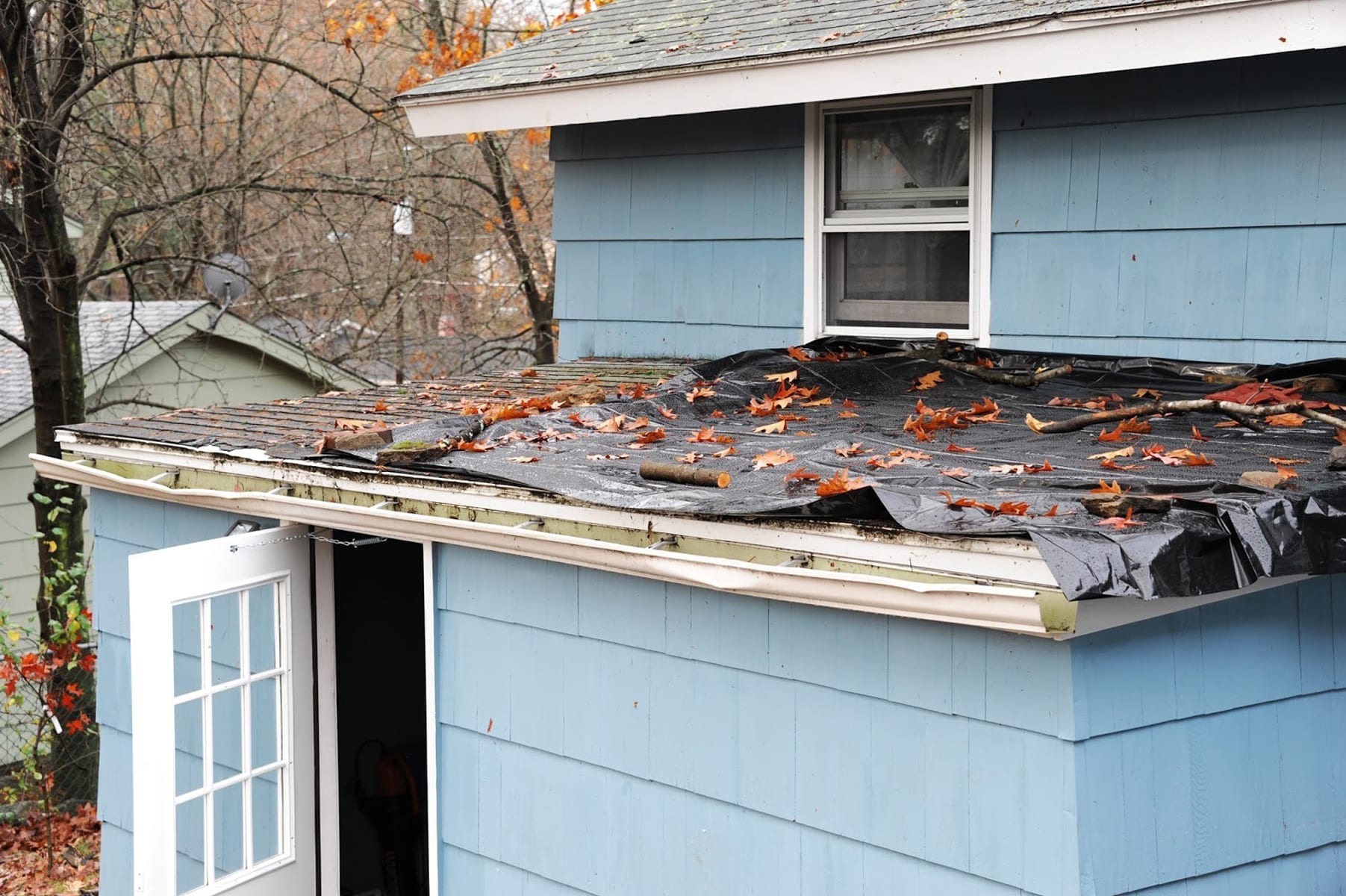
Weather Conditions
When your roofers did the installation job, what were the weather conditions like? Roofing should not be installed until rain and other storm conditions clear. Also, it should be installed in sunny-enough weather to activate the adhesive on the shingles. In cold climates, it may be necessary to manually seal the shingles.
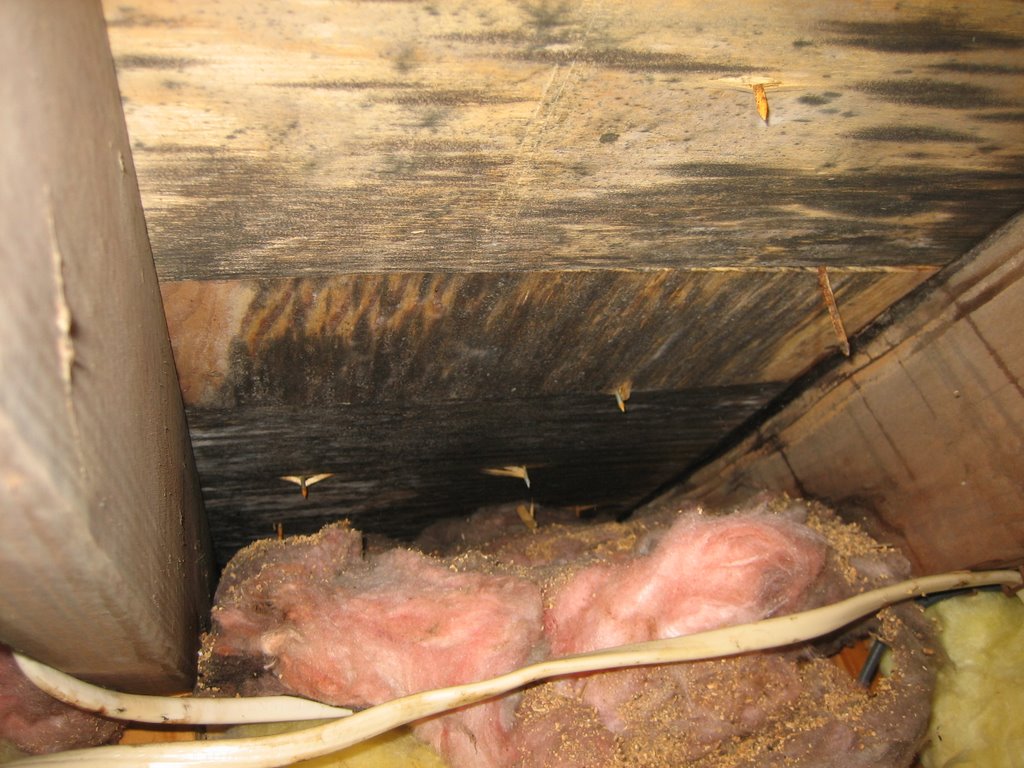
Poor Roof Design
When architects plan a poor roof design, roofers can’t fix it, but they can plan for it. On roofs where there are dormers positioned too close to valleys, chimneys blocking the flow of water, or valleys draining against a side wall, your roofers may need to focus on flashing installation to prevent water from running too high along the wall.
One of the easiest poor roof design problems for a homeowner to spot is downspouts that drain onto other roof faces or too close to the home. Roofers should redirect gutter spouts where possible to reduce the impact of water flow on the roof and your property.
What to Do with a Bad Roof Installation?
If your roof was installed incorrectly, what do you do? Your first step should be to reach out to the roofers who did the installation job and express your concerns. Small mistakes happen and reputable roofers are more than willing to come and look at the installation job and fix their errors. Many roofing contracts include warranties for these exact repairs, so it is wise to look at your contract to see if you have one.
When the original roofers are not responsive, you should work with a second roofing company to inspect the roof, discover the full extent of any mistakes made, and draft up a formal complaint to send out to the original roofers. If the original company still does not respond, you can reach out to a lawyer to consider litigation. Your lawyer is best positioned to recommend your course of action.
Also, work with the second roofer to get repairs or a new installation made as soon as possible to prevent further damage to your home.
Can a poorly installed roof be repaired? Or will you need a new roof? It depends on the issue. Many of the problems we’ve discussed, like inappropriate material choice, missing underlayment and very poor nailing, may require a new installation. Unfortunately, this can be a costly process for you. There are roof financing options and the potential of a lawsuit against the roofer, both of which can help you afford this additional work.
Does insurance cover leaking due to improper installation of a roof? That depends on whether poor installation is a covered peril under your policy. In most circumstances, homeowner’s insurance policies do not cover poor workmanship by contractors, including roofers. However, it is worthwhile to look at your policy to confirm whether or not you have coverage.
Avoid Problems if Your Roof is Installed Wrong
When you spot one of these warning signs, it is important to act on them before they cause more issues. Your roofer may have voided your manufacturer’s limited warranty by an improper installation, so any damage may not be covered by that warranty either.
When you have roofing installation problems, don’t make the mistake of attempting DIY roofing. Choose a professional and ensure that these problems are fixed so that your home won’t suffer further damage.


